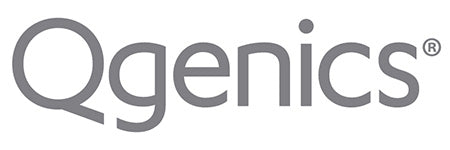High Blood Pressure
High Blood Pressure
What is high blood pressure?
When the heart beats it pumps the blood through the arteries and creates a pressure within them. Tiny, smooth muscles line the interior of blood vessels. These muscles’ ability to dilate or constrict governs the pressure and blood flow to each organ and tissue. When the muscles in the arteries and veins constrict, blood pressure rises. If this constriction occurs continuously, the blood pressure remains abnormally high. This is high blood pressure.
With the increased constriction of the vessels, the heart must work harder to pump an adequate amount of blood to all the tissues of the body (necessary to keep the body alive as the blood brings oxygen and nutrients to all the cells in the body).
The body can usually tolerate increased blood pressure for months, but eventually there can be damage. This can cause injury to the kidneys, brain, and eyes. Continuing high blood pressure puts you at an increased risk of heart disease and stroke.

What do blood pressure reading numbers mean?
If blood pressure is 120/80 mmHg, the top number refers to the amount of pressure in your arteries during the contraction of your heart muscle. This is called systolic pressure. The bottom number refers to your blood pressure when your heart muscle is between beats. This is called diastolic pressure.
The American Heart Association defines a normal blood pressure as less than 120/80. Elevated blood pressure ranges between 120/80 and 129/80, and high blood pressure is 130/80 and higher.
Signs of High Blood Pressure
Many people have high blood pressure for years without knowing it because they don’t experience noticeable symptoms. High blood pressure is often called the “silent killer” because it can give no sign of the damage it may be doing.
In some cases, people with high blood pressure may experience symptoms, such as:
- Severe headache
- Fatigue or mental confusion
- Visual disturbances
- Chest pain
- Difficulty breathing
- Irregular heartbeat
- Pounding in the chest, neck, or ears.
What causes high blood pressure?
Here are some factors related to high blood pressure:
So, what can you do?
So, what can you do?
Suggestions on Natural Ways to Lower Blood Pressure
1. Have the correct balance of minerals
Ensure you have the correct balance of minerals in your body – magnesium, calcium, potassium and phosphorus.
“The balance of magnesium and another mineral, calcium, in and around the muscle cells lining the arteries is a primary determining factor of their state of relaxation and constriction.” Excerpted from The Magnesium Solution for High Blood Pressure by Jay S. Cohen, M.D.
It can be hard to get an adequate amount of nutrients in the right balance from food today, so supplementation is very helpful to achieve this. Ensure your supplements are made of natural, plant-based ingredients to achieve optimum nutritional value.
2. Include blood pressure lowering foods in your diet
Celery: Celery is a food that helps to lower your blood pressure. Eating four stalks a day of this vegetable should be sufficient.
Potassium-rich foods: A diet high in potassium-rich foods could help overall cardiovascular health. The best sources of potassium: banana, fresh broccoli, avocado, Brussels sprouts, cauliflower, potatoes (with skins), cantaloupe, dates, prunes and raisins. Also, beans, parsley, peas, pistachios, wheat germ, sunflower seeds, chickpeas, almonds, sesame seeds, brazil nuts, peanuts and pecans.
Calcium-rich foods: Calcium-rich diets are linked to healthy blood pressure levels. Get calcium through dark leafy greens and tofu, as well as dairy.
Polyphenol-rich foods: Polyphenols are natural plant compounds. High-polyphenol diets can improve different markers of heart health, including blood pressure. High-polyphenol foods are olives and olive oil, berries and other fruits, vegetables, soy, dark chocolate, nuts and beans.
3. Walk and exercise regularly
Exercise is one of the best things you can do to lower high blood pressure. Walking just 30 minutes a day can help lower your blood pressure. More exercise helps reduce it even further.
4. Reduce your sodium intake
Know how much sodium you are consuming by reading the nutrition facts of the food you buy. You’ll be surprised how much sodium is in so many common foods. The "Dietary Guidelines for Americans" recommends limiting sodium intake to less than 2,300 mg per day—that’s equal to about 1 teaspoon of salt.
5. Drink less alcohol
Drinking alcohol in any quantity may raise your blood pressure. According to the "Dietary Guidelines for Americans" moderate alcohol consumption is defined as having up to 1 drink per day for women and up to 2 drinks per day for men.
6. Lose weight
Losing weight can significantly lower high blood pressure. This effect is even greater when you exercise. As one loses excess weight, blood pressure reduces proportionately. Refined carbs, especially sugar, may raise blood pressure so following a low-carb diet may help reduce blood pressure.
7. Learn to manage stress
Stress is a major factor in high blood pressure. Chronic stress can cause your heart rate to increase and your blood vessels to constrict. Fitting more “downtime” into your schedule, doing some different activities or having a change of scenery by visiting a new location can be helpful.
